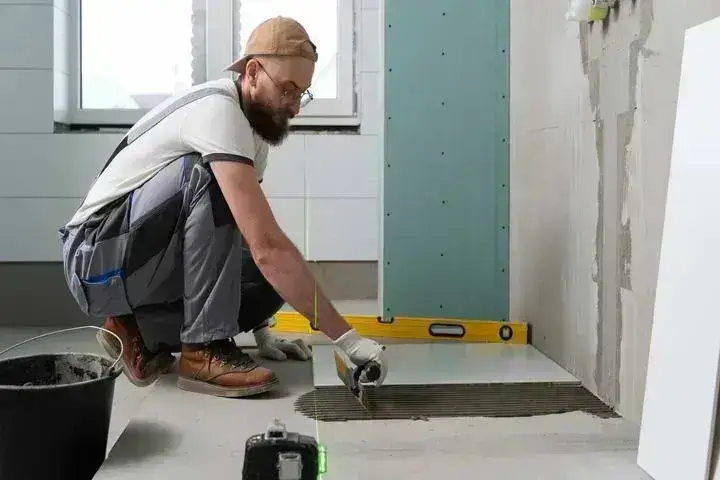Are you a homeowner who wants a bathroom that ensures safety, comfort, privacy, and hygiene? Then be aware of these common waterproofing issues and how to fix them to improve your home satisfaction and property value.
Poor waterproofing of toilets and bathrooms frequently makes them susceptible to water-related issues. This could lead to unstoppable water seepage, structural weakness, and expensive and time-consuming repair work. To be safe and comfortable inside bathrooms, residential occupants must use the right materials and techniques to waterproof them. Despite the constant touch of water, a well-waterproofed bathroom can efficiently resist water-related problems to offer a secure and hassle-free bathroom environment for residential dwellers.
In this article, you can discover some of the most common waterproofing challenges in residential bathrooms and how to fix them effectively.
Contents
- 1 Why Is Waterproofing Important in Residential Bathrooms?
- 2 What are Some Common Waterproofing Issues in Residential Bathrooms?
- 3 How Can Sunanda Global Fix All Your Bathroom Waterproofing Issues?
Why Is Waterproofing Important in Residential Bathrooms?
Bathroom waterproofing is the process of using materials and techniques on bathroom surfaces to make the structure resistant to water-related issues at any time of the year. It must be performed during the construction stage of the building, before applying the finishes. Homeowners must effectively waterproof their bathrooms to:
- Prevent Corrosion Damage: Concrete is porous and the steel reinforcement within the concrete could be prone to rust. Proper waterproofing ensures the durability of a bathroom’s concrete.
- Ensure Structural Strength: A bathroom will be safe and pleasant to use only if the walls, ceilings, and floors are durable. Good waterproofing will ensure these surfaces can withstand the effects of water.
- Increase Durability: The biggest advantage of waterproofing.
- Curb Health Hazards: Moisture retention due to lack of waterproofing can result in mould and other fungi to thrive. These cause allergic reactions and breathing issues in many.
- Save Money and Time: A bathroom that is waterproofed competently at the beginning can help dwellers steer clear of potential repairs and renovations which can be time-consuming and costly.
What are Some Common Waterproofing Issues in Residential Bathrooms?
Water Seepage through Walls
When water from leaking pipes, sinks, or showers permeates walls, water seepage occurs. It often appears as dark patches of moisture on walls, which can accumulate as droplets or even flow as leaks.
Causes
- Lack of or poor waterproofing
- Broken pipes
- Too much moisture build-up
- Improper drainage
Effects
- Mould growth
- Weakening of walls and ceilings
- Shedding of wall paint
- Unpleasant sight and odour
Pipe Leakage
Due to frequent usage of sinks and showers, the pipes are prone to wear and tear. Not tending to fix it soon can lead to loss of abundance of water.
Causes
- Faulty joints
- Rusting of pipes
- Frozen water that breaks pipes
- Excessive water pressure
Effects
- Water permeation through walls
- Wastage of water
- Overpriced bills
Deteriorating Grout Lines
Grout lines seal the gaps between tiles on floors and walls. They prevent water infiltration and dirt accumulation and give a finishing touch to the looks of the tiles.
Causes
- Wear and tear
- Faulty fixing
- Harsh cleaning chemicals
Effects
- Mould growth
- Black stains due to dirt accumulation
- Water seepage
Weakening of Waterproofing Membranes
Waterproofing membranes are thin coatings applied to surfaces to prevent water permeation. Proper waterproofing ensures that these membranes can last for a long time.
Causes
- Faulty installation
- Wear and tear
- Tear due to temperature changes
Effects
- Water seepage
- Expenses for repairs
- Mould growth
Appearance of Cracks on Walls
Cracks on bathroom walls can range from small crevices to massive tears.
Causes
- Wall expansion and contraction due to thermal alterations
- Constant exposure to water
Effects
- Risk to structural strength
- Unpleasant sight
- Water seepage
Mould Growth
Due to the high retention of warm moisture, bathrooms are often vulnerable to mould and mildew growth. Even after removal, they will keep reappearing due to the presence of moisture.
Causes
- Insufficient ventilation
- Dampness
- Gaps and cracks on walls and grout lines
Effects
- Allergies and respiratory issues
- Unpleasant sight and odour
- Decreased property value
Poor Ventilation
When there is poor air circulation in the bathroom, it becomes suffocating and too hot to stay in. Adequate ventilation removes moisture and odours and brings in fresh air.
Causes
- Blocked vents
- Absence of exhaust fans
- Lack of natural vents
Effects
- Lingering unpleasant odour
- Suffocation and perspiration
- Condensation build-up
How Can Sunanda Global Fix All Your Bathroom Waterproofing Issues?
Sunanda Global is the best waterproofing company known for its commitment to product innovation, cost-effectiveness, and reliability. At Sunanda, you can find a diverse range of quality products for all your bathroom waterproofing needs.
POLYALK WP
POLYALK WP is one of our best polymeric waterproofing coatings formulated to resolve common waterproofing issues in bathrooms. When mixed with cement, it forms an impermeable co-matrix film that bonds effectively with concrete surfaces, offering high flexural strength and excellent adhesion. Alkaline in nature, POLYALK WP is also compatible with concrete, preventing carbonation and allowing application in moist and damp conditions.
For application, start by scrubbing the bathroom surfaces to remove dust, dirt, and any loose material, and repair any cracks or faulty concrete. Pre-moisten the surface 24 hours before application. Mix one part POLYALK WP with one to 1.25 parts fresh cement, stirring continuously for a smooth consistency. Apply the mix to the damp surface using a brush or roller, following up with two or three more coats at 24-hour intervals. Allow the coating to set for 24-48 hours, then cure it by sprinkling water for 2-3 days. For enhanced durability, add a protective screed or plaster layer.
SUNPROOF PU 1K
SUNPROOF PU 1K is a single-component, polyurethane-based, liquid waterproofing membrane that provides a seamless, highly durable barrier on concrete surfaces. This flexible membrane adheres strongly to concrete, effectively withstanding extreme temperature variations without compromising flexibility. Unlike sheet-type membranes, SUNPROOF PU 1K offers a continuous waterproof layer, eliminating the need for a reinforcing layer, and can be easily applied using a brush, roller, wiper, squeegee, or spray.
To use, ensure the bathroom surfaces are free of dirt, dust, oil, and other contaminants. Fill any voids or cracks with polymer-modified repair mortar, allowing it to cure for at least 24 hours. Next, prime the surface with SUNPRIME PU and let it air-cure for 30 minutes. Apply the first coat of SUNPROOF PU 1K at a dosage of 1.2 – 2.3 kg/m² to achieve the desired thickness, allowing it to cure until tack-free before applying the second coat. Finally, air-cure the application for 12-48 hours, depending on ambient conditions, for long-lasting waterproofing and protection.
SUNPLEX
SUNPLEX is a shrinkage-compensating waterproofing admixture designed for enhanced durability in plaster applications. Easily added to a ready-mix truck or at the batch plant, SUNPLEX becomes an integral part of the concrete, providing long-term bathroom waterproofing benefits. This admixture has a unique self-healing property for hairline cracks, reactivating upon moisture exposure even years after application. It effectively withstands hydrostatic pressure up to 160, offering both positive and negative side waterproofing protection.
For optimal use, add SUNPLEX directly into the concrete mixer during batching, preferably by combining it with the batching water. Mix thoroughly for 10 minutes, then proceed with the remaining materials following standard batching procedures.
SUNKOTE WP+
SUNKOTE WP+ is one of our best acrylic wall waterproofing chemicals designed to prevent cracks on bathroom walls. It is a single-component, UV-resistant, elastomeric coating whose high-build, liquid-applied membrane is highly elastic, capable of withstanding cracks up to 2 mm and accommodating thermal movements. It offers excellent UV resistance, anti-fungal properties, and high tensile strength with strong adhesion to the substrate. Furthermore, the non-toxic formula allows the concrete to breathe while providing durable waterproofing protection.
To use, thoroughly clean the surface and repair any damage. Prime the surface with POLYALK WP or SUNPRIME WP, then apply two coats of SUNKOTE WP+ with a 24-hour interval, ensuring the second coat is applied perpendicular to the first. After curing for 24-48 hours, apply a protective screed with a proper slope.
Waterproofing issues can be challenging in residential bathrooms. However, with our superior products from Sunanda, you can create a safe and hygienic bathroom environment.
Need help with waterproofing your bathroom? We have expert waterproofing contractors in Mumbai, Delhi, Noida, Kolkata, and other major cities in India. Get in touch today!



A round of applause for your blog post.Really thank you! Will read on…
Thanks for sharing. I read many of your blog posts, cool, your blog is very good.